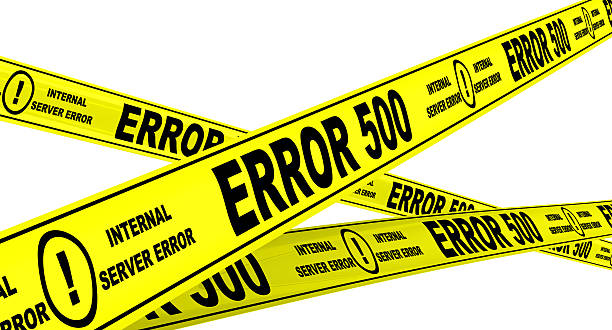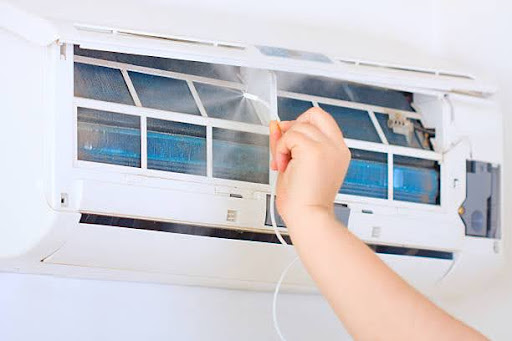In the fast-paced world of the internet, encountering a “500 error” can be a frustrating experience. You might have stumbled upon this error message while browsing a website, and you’re not alone in wondering, “What does this mean, and how can I fix it?” Fear not! In this guide, we’ll unravel the mysteries of the 500 error, exploring its causes, solutions, and everything in between. Let’s dive in!
500 Error: Demystified
Ah, the dreaded 500 error – it’s the equivalent of a “Sorry, we’re experiencing technical difficulties” sign in the digital world. But what exactly is a 500 error?
What is a 500 Error?
A 500 error, also known as the “Internal Server Error,” is a standard HTTP status code. It signifies that something has gone awry on the server’s end, preventing the requested web page from loading correctly. It’s like trying to open a book with missing pages; you’re left with an incomplete story.
Why “500”?
The “500” in the error code simply refers to the server’s inability to fulfill the request due to an unforeseen problem. Think of it as a code name for server hiccups.
Common Causes of a 500 Error
Now that we’ve defined the 500 error, let’s explore some common culprits behind this digital conundrum:
Server Overload: When a server is bombarded with too many requests at once, it can become overwhelmed, leading to a 500 error.
Programming Errors: Bugs, glitches, or coding mistakes within a website’s backend can trigger this error.
Faulty Plugins or Themes: If you’re using a content management system like WordPress, incompatible plugins or themes can wreak havoc on your site’s functionality.
Database Issues: Problems with database connections or queries can result in a 500 error.
Server Configuration: Incorrect server configurations can lead to miscommunications and errors.
Security Measures: Overly stringent security settings can sometimes block legitimate requests, causing a 500 error.
Resolving the 500 Error
Now that we’ve identified the common causes, it’s time to explore solutions to this pesky error. Remember, patience and methodical troubleshooting are your best allies.
Steps to Fix a 500 Error
Refresh the Page: Sometimes, a 500 error is temporary and can be resolved with a simple page refresh. It’s like giving the server a second chance to get it right.
Check Your Internet Connection: Ensure that your internet connection is stable. Sometimes, the error might be on your end.
Clear Browser Cache: Cached data can interfere with website loading. Clear your browser cache and try again.
Contact the Website Administrator: If the error persists, reach out to the website administrator or webmaster. They can provide insights into the issue.
Disable Plugins: If you’re using a content management system, temporarily deactivate plugins and themes to identify the culprit. Reactivate them one by one to pinpoint the problematic one.
Inspect the Server Logs: Server logs can offer valuable clues about the error’s origin. Review these logs or seek assistance from your hosting provider.
Update Software: Ensure that your website’s software, including CMS, plugins, and themes, is up to date. Developers often release updates to address bugs and vulnerabilities.
Check Permissions: Verify that file and directory permissions are correctly configured on your server. Incorrect permissions can lead to a 500 error.
Increase Server Resources: If your website experiences frequent traffic spikes, consider upgrading your hosting plan to accommodate the increased load.
Seek Professional Help: When all else fails, don’t hesitate to consult with a website experiences or server administrator. They possess the expertise to diagnose and resolve complex server issues.
FAQs about 500 Errors
What should I do if a website I visit frequently displays a 500 error?
If you frequently encounter a 500 error on a particular website, it’s best to wait for a while and try again later. The issue is likely on the website’s end, and their administrators are likely working to resolve it.
Can a 500 error pose security risks to my data?
While a 500 error itself doesn’t indicate a security breach, it can sometimes be a symptom of deeper issues. If you suspect a security concern, it’s crucial to investigate further and take appropriate security measures.
Why does a 500 error occur when I try to make an online purchase?
A 500 error during an online purchase can be frustrating, but it’s often due to server issues on the retailer’s end. Ensure your payment information is secure, and try the transaction again later.
Is there a quick fix for a 500 error?
In most cases, a quick fix involves refreshing the page or waiting for the server to recover. If the error persists, follow the troubleshooting steps outlined earlier in this guide.
Can a 500 error damage my website’s SEO?
Temporary 500 errors are unlikely to impact your website’s SEO. However, frequent or prolonged errors can lead to a poor user experience, potentially affecting your site’s ranking.
How can I prevent 500 errors on my website?
To prevent 500 errors, regularly update your website’s software, monitor server resources, and maintain a backup of your website’s data. Additionally, consider using a website monitoring service to detect and address issues promptly.
Conclusion
The 500 error, though vexing, is a common occurrence on the internet. Armed with the knowledge gained from this guide, you’re better equipped to handle it when it arises. Remember to stay patient, follow the troubleshooting steps, and seek professional assistance if needed. Don’t let the 500 error disrupt your online experience; instead, turn it into an opportunity to enhance your web savvy.




